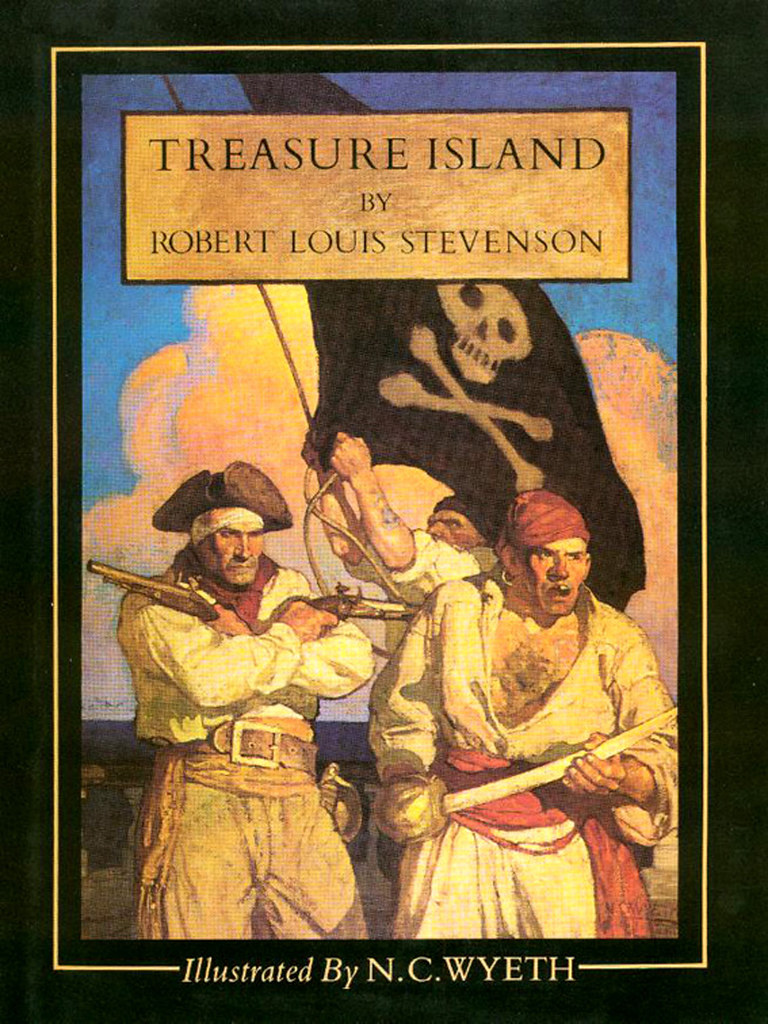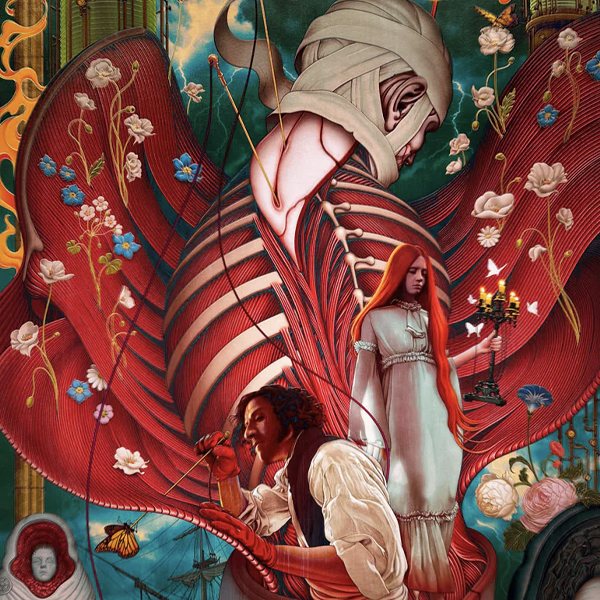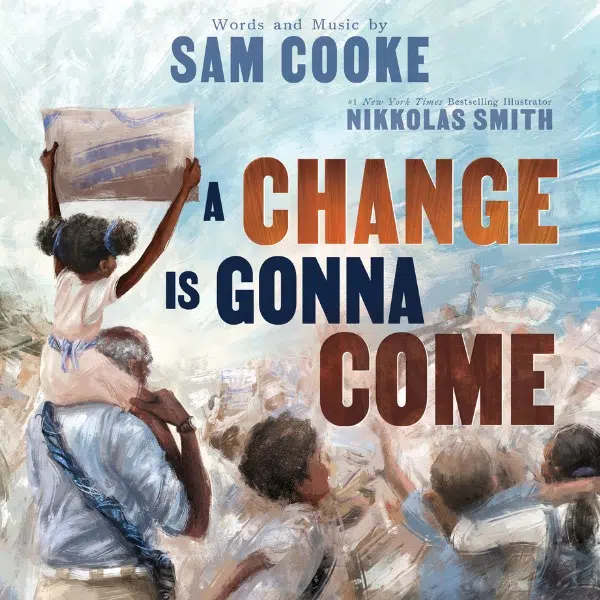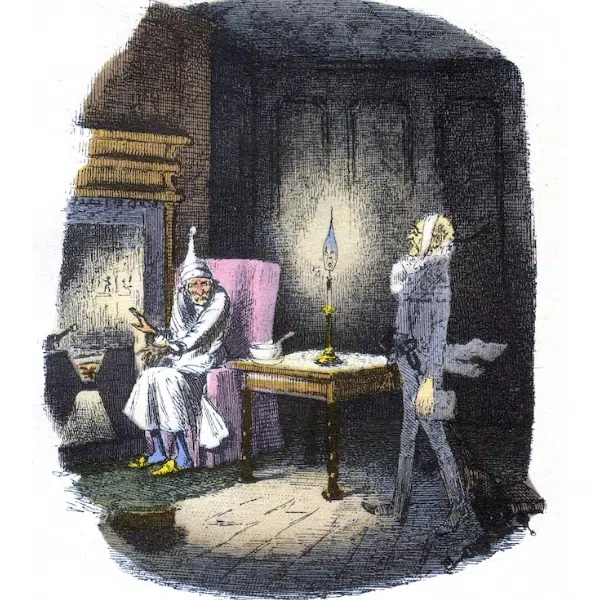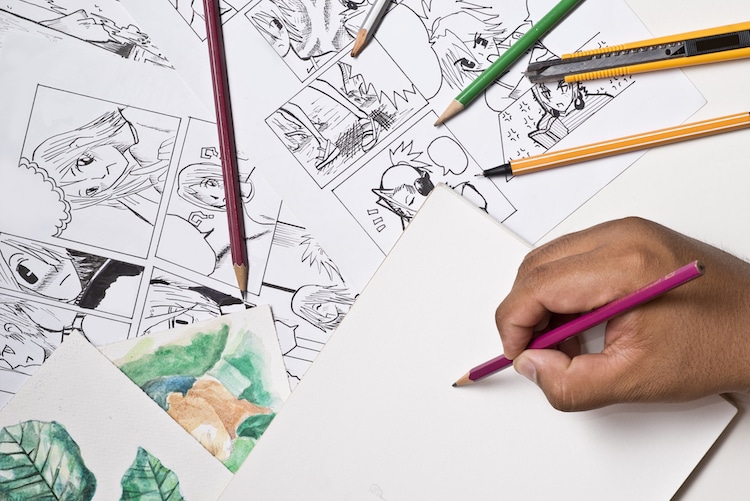
Stock Photos from Chaiwuth Wichitdho/Shutterstock
You might not realize it, but the field of illustration shapes the world we live in. It is at once highly visible while being invisible, and it has an influence that transforms our visual culture to give people a voice and our lives more meaning. Based on that, what exactly does illustration mean? Simply put, illustration is visual imagery that is best known for interpreting, depicting, explaining, and/or decorating the words in books, newspapers, and online media. Going well beyond that, however, illustrations are the drawings you find to make websites and apps more user-friendly (think emojis), the surface pattern on your paper coffee cup, the character on a cereal box, as well as the wallpaper in your favorite old home. And those are just some of the applications that illustration has.
D.B. Dowd, a designer, writer, illustrator, and visual culture theorist, likens illustration to a hammer. The tool is practical and serves a very deliberate function. But can a hammer be beautiful? Yes, it can. An illustration is similar. It is practical—it conveys information. And, of course, illustration can be beautiful and evoke emotion.
Now that you have an idea of the wide-ranging world of illustration, learn how the field got its modern start and more of the ways in which we see illustration today.
The Golden Age of Illustration: The Beginning of Modern Illustration
Illustration can be traced back as far as the Lascaux cave paintings from the prehistoric era. And with the invention of the printing press in the 15th century, publications could be replicated on a massive scale that allowed ideas to be communicated and shared.
Although the world was seeing unprecedented printed material being produced, it still took centuries for illustration to enter its “Golden Age.” Why was this? Well, despite the ability to produce multiple copies of a publication, doing this was still an expensive endeavor with relatively limited distribution options.
This changed, however, at the end of the 19th century. The halftone printing process was developed and made image production easier. (Prior to halftone printing, all images would have to be hand-carved into woodblocks and then printed.) Paper production and distribution were also factors. The material became cheaper, and the newly established cross-continental railways allowed for the widespread circulation of printed materials.
Industrialization also played a part in the ubiquity of print collateral. Its effects made people wealthier overall with a disposable income to enjoy. One of the things they spent their money on was books and magazine subscriptions. It was at this time that American illustration began to take off. Publishers realized that to sell copies of their books and subscriptions to their publications, they needed to include images. Harper’s Monthly, Collier’s, and Scribner’s were some of the most popular companies because they recognized the value of illustration in their productions and they built large circulations because of it.
You might be asking yourself—what about photography? Why couldn’t magazines just include those types of images? When the Golden Age was starting, photography was still young, having been invented just a little earlier in the 1800s. Photographs in these types of publications weren’t available yet, and so there was a high demand for illustrators.
The illustrators who became popular during the Golden Age were akin to movie stars. They not only made a lot of money from their commissions, but they hobnobbed with Hollywood. One of the most famous illustrators from this time was N.C. Wyeth, who spent time with Douglas Fairbanks and Mary Pickford—massive celebrities at the time.
Creative trends come and go, and so did the Golden Age of illustration. By the 1930s, photographic reproduction (and color photography) began to make its way into magazines and books and pushed illustrators aside.
Although the popularity of illustration waned, it has continued to remain relevant, from signage protesting wars to New Yorker covers to clothing design—this is all even as photography and video have continued to proliferate across the internet. But in our increasingly digital age, illustration shows a handcrafted touch in a world that is commonly viewed from a screen.
Some of the Ways Illustration Is Used Today
Illustration is used in so many ways—some you might not realize. Here are just some (but certainly not all) of the forms in which illustration exists in our world.
To illuminate stories in books and magazines
View this post on Instagram
Illustration is perhaps best known as the pictures that illuminate our favorite books and articles in magazines. Publication illustration is where the field came to life and where creatives have produced some of the most enduring images. And in many cases, illustrators have helped define the things we see when they are adapted in other ways—such as the Harry Potter book covers, illustrated by Mary GrandPre, and how that influenced the film series.
To give items a more colorful and original touch—and the world at large
View this post on Instagram
A world of solid colors would be boring. Think about wallpaper, socks, enamel pins, coffee mugs—they all use illustration to add personality to the object and, more importantly, let us express ourselves.
To adorn package design
View this post on Instagram
Illustration, no matter how subtle, often adorns package design to help products stand out on the shelves.
To make digital media feel more human

The digital world can feel so impersonal. Illustration, especially when it looks as though it is drawn by hand, adds that human touch. You’ll likely see more websites and apps utilizing illustration in their icons, error pages, and accompanying login pages to make them feel friendlier and joyful.
To take a social stand
View this post on Instagram
There are many ways that illustration has aided in people taking a social stand. One way is through protest images and signage. This use of illustration has been around since the suffragettes, but it has grown more popular in recent years with the Women’s March, the Black Lives Matter movement, the Global Climate March and many other forms of activism.
Advertisements
Whether it’s in print, online, or on the television, you’ll find illustration in the world of advertising. While it has serious competition with photography and film, advertising was a huge part of illustration during the Golden Age and the middle of the 20th century and it hasn’t gone away.
In the concept art of your favorite television and films
View this post on Instagram
Before a television or film show goes into production, concept illustrators will imagine the visual design for an item, character, or entire world that doesn't exist yet. You'll see this with video games and fantasy films today, but concept art was also used for some of Disney's most beloved animated films such as Alice in Wonderland. Illustrator Mary Blair came up with the initial design of the characters we know and love.
Related Articles:
Interview: How a Job as a Letter Carrier Helped This Artist Create His Retro-Inspired Illustrations
Funny Little Matchboxes Feature Illustrations of Cats in Bars Who’ve Had One Too Many
Powerful Illustrations Offer a Poignant Mirror to Our Modern World
![Hearst's v24 n07 [1913-07] cover](https://live.staticflickr.com/4822/33512885088_86af9de4bf_h.jpg)
